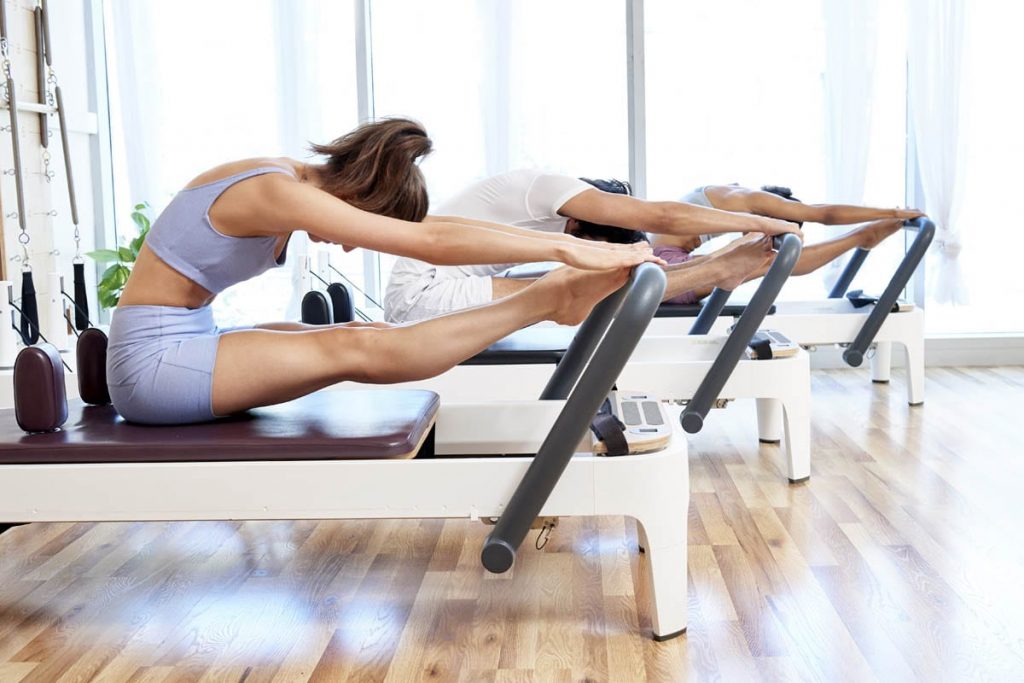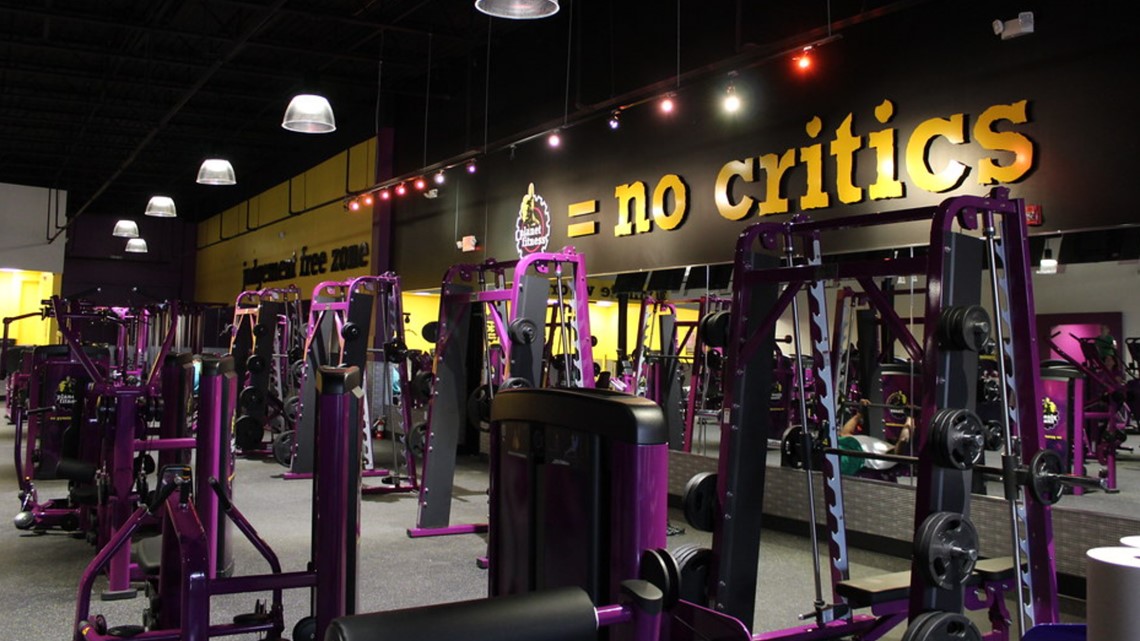
There are many types of exercises that you can do to achieve the body you desire. Cardiovascular exercises improve your heart and circulatory system. Stretching and strength training improve balance and coordination. You can choose from a variety of exercises, depending on what you want to achieve. Megaformer, a popular type for working out, is one of the most preferred. Here are some benefits of each kind. These are just some of the many types you can do.
Warm-ups. Your heart rate and body temperature will rise during the warm-up phase. You can also choose specific warm-ups to mimic the exercise you are going to do. You can then begin your workout. Begin your cardio or aerobic training with low-impact movements. It's important to pick the best type of exercise for you. All four types of exercise are beneficial, as well as a combination of them.

Interval training. Interval training allows you to do multiple movements at different intensities. You might alternate periods of intense training with periods of rest. This type of workout allows you to exercise longer and for higher intensity. This type of exercise doesn't require you do a marathon for 2 minutes. But it does require a certain degree of fitness. It is great for those looking to lose weight. Aerobic exercise can be done in many ways, so make sure you choose the right one for you.
High-volume repletion. This type of exercise involves multiple repetitions of the exact same exercises. It minimizes boredom and injuries. A person who does high-volume repletion is likely to be healthier and stronger, with less stress and discomfort. This type of training will help you develop your leadership skills. It can also improve your posture in vulnerable positions. In short, these workouts can help you achieve your fitness goals faster than ever.
Circuit-based exercises. These workouts require each client to complete a series of rotating tasks over a period of time. Circuit training should only be done for a predetermined number of rounds. Easy exercises, such as Pilates, should be the first round. Complex exercises should be done in the second round. This type is recommended for athletes who have suffered injuries. However, you can still do high-intensity workouts.

Cardio-based workouts. This type of exercise involves a large number of movements, such as running or cycling. The intensity of your cardio workout can be dangerous and could lead to injury. Some types of cardio workouts may be dangerous, so only the most experienced people should participate in such workouts. These workouts can be dangerous, especially for those who aren't careful. Beginners should begin by performing the exercises they need to be successful.
FAQ
What is the difference between fat and sugar?
Fat can be a source of energy that is obtained from food. Sugar is a sweet, naturally occurring substance in fruits and vegetables. Both fats and sugars provide the same number of calories. Fats however, have more calories than sugars.
Fats are stored in the body and contribute to obesity. They can cause cholesterol buildup, which can lead you to heart attacks and strokes.
Sugars can be quickly absorbed by your body and give you instant energy. This causes blood sugar levels to rise. High blood glucose levels can be dangerous because it increases the risk of developing type II diabetes.
What is the difference between calories and kilocalories in food?
Calories can be used to measure how much energy is in food. Calories are a unit of measurement. One calorie is the amount of energy required to heat one gram water one degree Celsius.
Kilocalories is another name for calories. Kilocalories can be measured in thousandsths of one calorie. For example, 1000 calories equals one kilocalorie.
What are the 10 best foods to eat?
These are the 10 best foods you can eat:
-
Avocados
-
Berries
-
Broccoli
-
Cauliflower
-
Eggs
-
Fish
-
Grains
-
Nuts
-
Oats
-
Salmon
How can I reduce my blood pressure
It is important to first understand what high blood pressure is. Next, take steps that will reduce the risk. You can do this by eating less salt, losing weight, or taking medication.
It is important to ensure that you get enough exercise. If you don't have time for regular exercise, then try walking as often as possible.
A gym membership is a good idea if you don't like how much exercise your doing. It's likely that you will want to join a gym with other people who are working towards the same goals as you. It is easier to adhere to a fitness routine when someone else will be there with you.
What should I be eating?
Eat lots of fruits and vegetables. They provide vitamins and minerals to keep your immune system strong. They are also rich in fiber, which is good for digestion and makes fruits and vegetables filling. Include at least five portions of fruit and vegetables per day.
Make sure you drink plenty of water too. Water flushes out toxins and helps you feel full between meals. Drink about eight glasses each day.
Refined grains should be replaced with whole grains. Whole grains contain all of their nutrients, including B vitamins and iron. Some nutrients have been removed from refined grains.
Sugary drinks are best avoided. Sugary drinks are high in empty calories and can lead to obesity. Instead, you can opt for water or milk, as well as unsweetened herbal teas.
Avoid fast food. Fast food is low in nutritional value. Although it may taste delicious, fast food won't provide you with the energy you need for your daily activities. Use healthier options, such as soups, sandwiches, salads, and pasta.
Try to limit alcohol intake. You can reduce your intake of alcohol by limiting the amount of empty calories. Limit your intake of alcohol to two drinks per week.
Red meat consumption should be reduced. Red meats can be high in cholesterol and saturated fat. You should choose lean cuts like beef, pork lamb, chicken and fish instead.
What's the difference between a virus & a bacterium?
A virus is a microscopic organism that cannot reproduce outside its host cell. A bacterium can be described as a single-celled organism which reproduces by splitting in two. Viruses can be as small as 20 nanometers, while bacteria can grow up to 1 micron.
Viruses are often spread through contact of infected bodily fluids like saliva, urine or semen. Bacteria are often spread via direct contact with contaminated surfaces or objects.
Viral infections can be transmitted through skin cuts, scrapes and bites. They can also be transmitted through the eyes, nose, mouth, ears, rectum, and anus.
Bacteria can get into our bodies through cuts, scrapes and burns, insect bites, or other skin breaks. They can also get into our bodies via food, water or soil.
Both viruses and bacteria can cause illness. Viruses can not multiply within the host. So they only cause illnesses when they infect living cells.
Bacteria can spread within the host and cause illness. They can infiltrate other parts of the body. Antibiotics are needed to eliminate them.
Statistics
- WHO recommends consuming less than 5% of total energy intake for additional health benefits. (who.int)
- According to the 2020 Dietary Guidelines for Americans, a balanced diet high in fruits and vegetables, lean protein, low-fat dairy and whole grains is needed for optimal energy. (mayoclinichealthsystem.org)
- According to the Physical Activity Guidelines for Americans, we should strive for at least 150 minutes of moderate intensity activity each week (54Trusted Source Smoking, harmful use of drugs, and alcohol abuse can all seriously negatively affect your health. (healthline.com)
- The Dietary Guidelines for Americans recommend keeping added sugar intake below 10% of your daily calorie intake, while the World Health Organization recommends slashing added sugars to 5% or less of your daily calories for optimal health (59Trusted (healthline.com)
External Links
How To
10 Tips for a Healthy Lifestyle
How to lead a healthy lifestyle
We live in a fast-paced world that makes it difficult to get enough sleep, consume too much alcohol, smoke cigarettes, and eat too much. We don't pay enough attention to our bodies' health.
It can be very difficult for someone who works full-time to have a healthy diet. It is even more difficult if you feel stressed. Then, your mind tells yourself that it cannot handle this situation any more so we feel guilty about it and give up.
If you feel something is wrong with the body, it is probably. Seek out a doctor to discuss your current health condition. If there's nothing abnormal, you might have stress from your job.
Some people think they are lucky because their jobs enable them to regularly go to the gym or have good friends who encourage them to stay fit. Those people are lucky. These people don't have any difficulties. They have everything under control. I wish everyone could become like them. Unfortunately, many of us don’t know how to manage our personal and work lives. Many people develop bad habits that eventually lead to disease such as diabetes, heart disease, and cancer.
These tips can help you improve the quality of your life.
-
Get 7 hours of sleep minimum and 8 hours maximum each night. This includes proper sleeping positions and avoiding caffeine during the last hour before going to bed. Caffeine blocks the production of melatonin hormones and makes it harder to fall asleep. You should also ensure that your bedroom has a dark, clean environment. Blackout curtains are a must, especially if you work late at nights.
-
Get healthy - Start your day with a good breakfast. Try to avoid sugar products, fried foods, processed food and white breads. Try to include whole grains, fruits, and vegetables for lunch. A good snack option for afternoon is to include protein-rich snacks like nuts, seeds, beans and dairy products. Avoid unhealthy snacks like chips, candies, cookies, cakes and sodas.
-
Drink lots of water. We don't have enough. Water helps us to burn more calories, keeps our skin looking young and supple, flushes toxins from our system and improves digestion. Drinking six glasses of water daily will help you lose weight faster. Checking the color of urine is a good way to gauge your hydration. A yellow urine color indicates that you are dehydrated. An orange urine color means that you are slightly dehydrated. Pink urine means that your hydration level is normal. Red urine means that you are overhydrated. Clear urine means that you're highly hydrated.
-
Regular exercise can increase energy and decrease depression. Walking is a good way to get fit and improve your mood. Even though it may look easy, walking requires focus and concentration. Your brain needs to keep your eyes on the road and focus on breathing slow and deep. For between 100 and 150 calories, a 30 minute walk can be enough to burn about 100 to 150 calories. Slowly build up and start slow. To prevent injury, don't forget to stretch after you exercise.
-
Positive thinking is vital for mental health. Positive thinking creates a positive environment within ourselves. Negative thoughts can drain energy and cause anxiety. You can stay motivated by thinking about what you want to achieve. Break down the tasks into smaller steps if you feel overwhelmed by all the new tasks. It is inevitable that you will fail. But don't worry, just keep trying and get up again.
-
Say No. We can often be so busy that it is hard to see how much of our time we are wasting on useless tasks. It is important that you learn to say no when necessary. Saying 'no' does not mean being rude. Saying No is simply saying that you cannot take care of something right now. You can always find other ways to complete the job later. Set boundaries. You can ask someone to help you. This work can be delegated to someone else.
-
Take care of yourself - Pay attention to your diet. A healthier diet will help boost your metabolism, and you can lose extra weight. Don't eat too much oily or heavy foods as they can increase cholesterol levels. A good tip is to have three meals and two snacks daily. Aim to consume 2000-2500 calories each day.
-
Meditation can be a great stress relief and can help reduce anxiety. You can relax your mind by simply sitting still with your closed eyes. This exercise will give your mind clarity, which is very important in making decisions. Meditation will help you feel calmer and happier.
-
Breakfast is the most important meal in the day. Skipping breakfast may cause you to eat more at lunchtime. It is never too late to eat a balanced breakfast as long as you eat within 1 hour of waking. Eaten breakfast will boost your energy and help you manage your hunger.
-
Healthy food is the best. Food can have a profound effect on our moods. Avoid junk food and any food products that contain artificial ingredients or preservatives. These foods can make your body more acidic and cause cravings. A variety of fruits and vegetables is rich in vitamins, minerals and other nutrients that can help improve overall health.